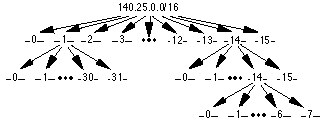



VLSM Example
Given
An organization has been assigned the network number 140.25.0.0/16 and it plans to
deploy VLSM. Figure 20 provides a graphic display of the VLSM design
for the organization.

Figure 20: Address Strategy for VLSM Example
The first step of the subnetting process divides the base network address into 16 equal-sized address blocks. Then Subnet #1 is divided it into 32 equal-sized address blocks and Subnet #14 is divided into 16 equal-sized address blocks. Finally, Subnet #14-14 is divided into 8 equal-sized address blocks.
Define the 16 Subnets of 140.25.0.0/16
The first step in the subnetting process divides the base network address into 16
equal-size address blocks. This is illustrated in Figure 21.
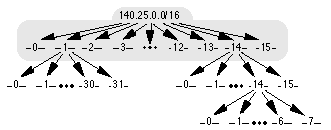
Figure 21: Define the 16 Subnets for 140.25.0.0/16
Since 16 = 2 4 , four bits are required to uniquely identify each of the 16 subnets. This means that the organization needs four more bits, or a /20, in the extended-network-prefix to define the 16 subnets of 140.25.0.0/16. Each of these subnets represents a contiguous block of 2 12 (or 4,096) network addresses.
The 16 subnets of the 140.25.0.0/16 address block are given below. The subnets are
numbered 0 through 15. The italicized portion of each address identifies the extended-network-
prefix, while the bold digits identify the 4-bits representing the subnet-number
field:
Base Network: 10001100.00011001 .00000000.00000000 = 140.25.0.0/16
Subnet #0 : 10001100.00011001.00000000.00000000 = 140.25.0.0/20
Subnet #1 : 10001100.00011001.00010000.00000000 = 140.25.16.0/20
Subnet #2 : 10001100.00011001.00100000.00000000 = 140.25.32.0/20
Subnet #3 : 10001100.00011001.00110000.00000000 = 140.25.48.0/20
Subnet #4 : 10001100.00011001.01000000.00000000 = 140.25.64.0/20
:
:
Subnet #13 : 10001100.00011001.11010000.00000000 = 140.25.208.0/20
Subnet #14 : 10001100.00011001.11100000.00000000 = 140.25.224.0/20
Subnet #15 : 10001100.00011001.11110000.00000000 = 140.25.240.0/20
Define the Host Addresses for Subnet #3 (140.25.48.0/20)
Let's examine the host addresses that can be assigned to Subnet #3 (140.25.48.0/20).
This is illustrated in Figure 22.
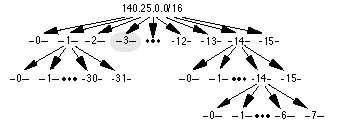
Figure 22: Define the Host Addresses for Subnet #3 (140.25.48.0/20)
Since the host-number field of Subnet #3 contains 12 bits, there are 4,094 valid
host addresses (2 12 -2) in the address block. The hosts are numbered 1 through
4,094. The valid host addresses for Subnet #3 are given below. The italicized portion
of each address identifies the extended-network-prefix, while the bold digits
identify the 12-bit host-number field:
Subnet #3 : 10001100.00011001.00110000.00000000 = 140.25.48.0/20
Host #1 : 10001100.00011001.00110000.00000001 = 140.25.48.1/20
Host #2 : 10001100.00011001.00110000.00000010 = 140.25.48.2/20
Host #3 : 10001100.00011001.00110000.00000011 = 140.25.48.3/20
:
:
Host #4093: 10001100.00011001.00111111.11111101 = 140.25.63.253/20
Host #4094: 10001100.00011001.00111111.11111110 = 140.25.63.254/20
The broadcast address for Subnet #3 is the all 1's host address or:
10001100.00011001.00111111.11111111 = 140.25.63.255
The broadcast address for Subnet #3 is exactly one less than the base address for Subnet #4 (140.25.64.0).
Define the Sub-Subnets for Subnet #14 (140.25.224.0/20) After the base network address is divided into sixteen subnets, Subnet #14 is further subdivided into 16 equal-size address blocks. This is illustrated in Figure 23.

Figure 23: Define the Sub-Subnets for Subnet #14 (140.25.224.0/20)
Since 16 = 2 4 , four more bits are required to identify each of the 16 subnets.
This means that the organization will need to use a /24 as the extended-network-prefix
length. The 16 subnets of the 140.25.224.0/20 address block are given below. The
subnets are numbered 0 through 15. The italicized portion of each sub-subnet address
identifies the extended-network-prefix, while the bold digits identify the
4-bits representing the sub-subnet-number field:
Subnet #14 : 10001100.00011001.11100000.00000000 = 140.25.224.0/20
Subnet #14-0: 10001100.00011001.11100000.00000000 = 140.25.224.0/24
Subnet #14-1: 10001100.00011001.11100001.00000000 = 140.25.225.0/24
Subnet #14-2: 10001100.00011001.11100010.00000000 = 140.25.226.0/24
Subnet #14-3: 10001100.00011001.11100011.00000000 = 140.25.227.0/24
Subnet #14-4: 10001100.00011001.11100100.00000000 = 140.25.228.0/24
:
Subnet #14-14: 10001100.00011001.11101110.00000000 = 140.25.238.0/24
Subnet #14-15: 10001100.00011001.11101111.00000000 = 140.25.239.0/24
Define Host Addresses for Subnet #14-3 (140.25.227.0/24)
Let's examine the host addresses that can be assigned to Subnet #14-3 (140.25.227.0/24).
This is illustrated in Figure 24.
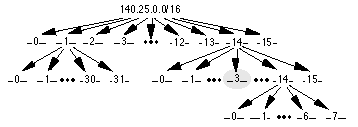
Figure 24: Define the Host Addresses for Subnet #14-3 (140.25.227.0/24)
Each of the subnets of Subnet #14-3 has 8 bits in the host-number field. This means that each subnet represents a block of 254 valid host addresses (2 8 -2). The hosts are numbered 1 through 254.
The valid host addresses for Subnet #14-3 are given below. The italicized portion
of each address identifies the extended-network-prefix, while the bold digits
identify the 8- bit host-number field:
Subnet #14-3: 10001100.00011001.11100011 .00000000 = 140.25.227.0/24
Host #1 10001100.00011001.11100011.00000001 = 140.25.227.1/24
Host #2 10001100.00011001.11100011.00000010 = 140.25.227.2/24
Host #3 10001100.00011001.11100011.00000011 = 140.25.227.3/24
Host #4 10001100.00011001.11100011.00000100 = 140.25.227.4/24
Host #5 10001100.00011001.11100011.00000101 = 140.25.227.5/24
.
.
Host #253 10001100.00011001.11100011.11111101 = 140.25.227.253/24
Host #254 10001100.00011001.11100011.11111110 = 140.25.227.254/24
The broadcast address for Subnet #14-3 is the all 1's host address or:
10001100.00011001.11100011.11111111 = 140.25.227.255
The broadcast address for Subnet #14-3 is exactly one less than the base address for Subnet #14-4 (140.25.228.0).
Define the Sub 2 -Subnets for Subnet #14-14 (140.25.238.0/24)
After Subnet #14 was divided into sixteen subnets, Subnet #14-14 is further subdivided
into 8 equal-size address blocks. This is illustrated in Figure 25.
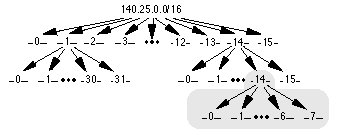
Figure 25: Define the Sub 2 -Subnets for Subnet #14-14 (140.25.238.0/24)
Since 8 = 2 3 , three more bits are required to identify each of the 8 subnets. This means that the organization will need to use a /27 as the extended-network-prefix length.
The 8 subnets of the 140.25.238.0/24 address block are given below. The subnets are
numbered 0 through 7. The italicized portion of each sub-subnet address identifies
the extended-network-prefix, while the bold digits identify the 3-bits representing
the subnet 2 -number field:
Subnet #14-14: 10001100.00011001.11101110 .00000000 = 140.25.238.0/24
Subnet#14-14-0: 10001100.00011001.11101110.000 00000 = 140.25.238.0/27 Subnet#14-14-1:
10001100.00011001.11101110.00100000 = 140.25.238.32/27 Subnet#14-14-2:
10001100.00011001.11101110.01000000 = 140.25.238.64/27 Subnet#14-14-3:
10001100.00011001.11101110.01100000 = 140.25.238.96/27 Subnet#14-14-4:
10001100.00011001.11101110.10000000 = 140.25.238.128/27 Subnet#14-14-5:
10001100.00011001.11101110.10100000 = 140.25.238.160/27 Subnet#14-14-6:
10001100.00011001.11101110.11000000 = 140.25.238.192/27 Subnet#14-14-7:
10001100.00011001.11101110.11100000 = 140.25.238.224/27
Define Host Addresses for Subnet #14-14-2 (140.25.238.64/27)
Let's examine the host addresses that can be assigned to Subnet #14-14-2 (140.25.238.64/27).
This is illustrated in Figure 26.
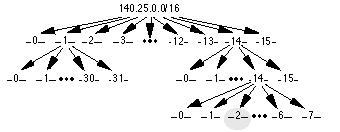
Figure 26: Define the Host Addresses for Subnet #14-14-2 (140.25.238.64/27)
Each of the subnets of Subnet #14-14 has 5 bits in the host-number field. This means that each subnet represents a block of 30 valid host addresses (2 5 -2). The hosts will be numbered 1 through 30.
The valid host addresses for Subnet #14-14-2 are given below. The italicized portion
of each address identifies the extended-network-prefix, while the bold digits
identify the 5-bit host-number field:
Subnet#14-14-2: 10001100.00011001.11101110.010 00000 = 140.25.238.64/27
Host #1 10001100.00011001.11101110.01000001 = 140.25.238.65/27
Host #2 10001100.00011001.11101110.01000010 = 140.25.238.66/27
Host #3 10001100.00011001.11101110.01000011 = 140.25.238.67/27
Host #4 10001100.00011001.11101110.01000100 = 140.25.238.68/27
Host #5 10001100.00011001.11101110.01000101 = 140.25.238.69/27
.
.
Host #29 10001100.00011001.11101110.01011101 = 140.25.238.93/27
Host #30 10001100.00011001.11101110.01011110 = 140.25.238.94/27
The broadcast address for Subnet #14-14-2 is the all 1's host address or:
10001100.00011001.11011100.01011111 = 140.25.238.95
The broadcast address for Subnet #6-14-2 is exactly one less than the base address for Subnet #14-14-3 (140.25.238.96).
Additional Practice with VLSM
Please turn to Appendix D for practice exerciss to reinforce
your understanding of VLSM.